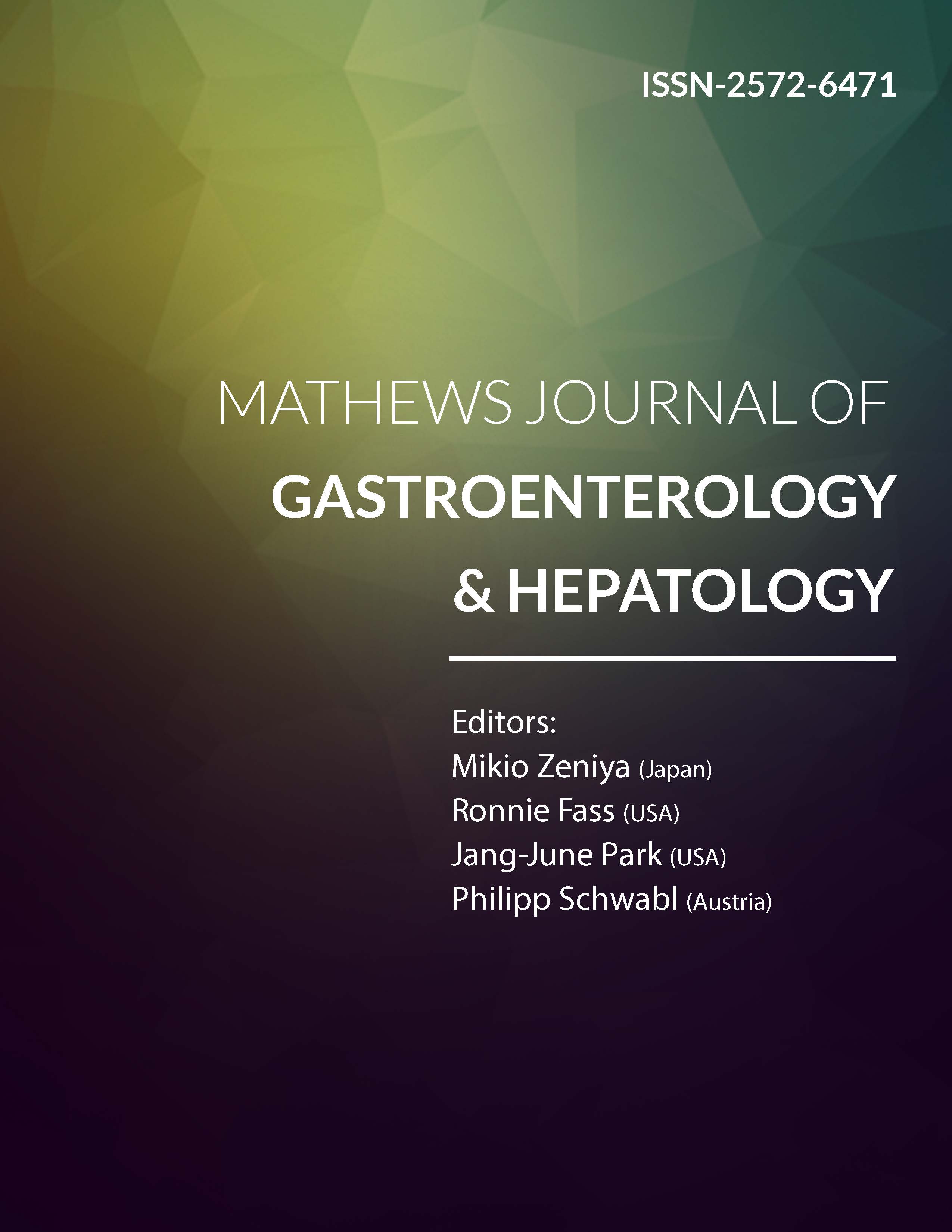
Information Links
Previous Issues Volume 8, Issue 1 - 2023
Factors Influencing the Severity of Irritable Bowel Syndrome in the HGE Department of the Center Hospitalier Universitaire de Cocody Abidjan CI
Soro D*, Altine M, Al Vera Vdm, Ouattara A, Lah Bi R
Department of Hepato-Gastroenterology, University Hospital of Cocody Abidjan Ivory Coast, Côte d'Ivoire
*Corresponding author: Dr. Soro Dramane, Department of Hepato-Gastroenterology, University Hospital of Cocody Abidjan Ivory Coast, Côte d'Ivoire, Mobile: +225 0749318590; Email: [email protected].
Received Date: April 19, 2023
Published Date: May 02, 2023
Citation: Soro D, et al. (2023). Factors Influencing the Severity of Irritable Bowel Syndrome in the HGE Department of the Center Hospitalier Universitaire de Cocody Abidjan CI. Mathews J Gastroenterol Hepatol. 8(1):20.
Copyrights: Soro D, et al. © (2023).
ABSTRACT
Aim: To determine the factors influencing the severity of IBS. Methods: This was a monocentric prospective cross-sectional study with an analytical aim, conducted in outpatient Hepato-Gastroenterology consultations. All patients meeting the ROME III criteria were included. Results: 107 patients were collected out of 1343, i.e. a prevalence of 7.96%. There was a female predominance with a sex ratio of 0.52%. The average age of our patients was 40 years. The 30-50 age group was the most represented with 60.82%. The 2 main personal histories were abdominal surgery (28.04%) and atopic terrain (16.82%). More than half of the patients, 52.34%, had a family history of IBS. The main digestive signs of IBS found were bloating (77.57%), constipation (39.25%) and abdominal pain (32.71%). The constipation-predominant IBS subtype accounted for 39.25%, followed by the alternating diarrhea/constipation (24.30%) and unclassified (24.30%) subtypes. Nearly half of our patients (44.86%) had a sign frequency of at least 3 days/week. The 3 other digestive symptoms found were rumbling (63.55%), flatulence (57.94%) and dyspepsia (48.60%). The 3 main extra-digestive signs found were low back pain (55.14%), sleep disorders (28.04%) and asthenia (23.36%). The mode of progressive installation predominated with 56.60% and the duration of evolution was long in 76.64% of patients. 51.40% of our patients reported having severe transit disorders, 42.99% moderate bloating and moderate abdominal pain in 42.99%. 54.21% of patients declared the financial cost and 35.51% absenteeism as the main impact on quality of life. The 2 main psychological factors found were stress (58.88%) and anxiety (39.25%). The practice of regular physical activity was found in 39.35% of patients. The main dietary habits were milk (61.68%), taking meals at irregular times (48.60%) and insufficient fluid intake (35.51%). In univariate analysis, there was a statistically significant association between the type of IBS and sex (p<0.005); between the practice of physical activity and the severity of bloating, transit disorders (P<0.05); between the severity of the symptoms and the sex in case of transit disorder (P<0.05) finally between the stress and the severity of the abdominal pain (p<0.05). There was no statistically significant link between the type of IBS and the frequency of signs (P>0.05); between gender and the severity of bloating and abdominal pain (P>0.05) finally between psychological factors and the severity of bloating (P>0.05) and transit disorders (P>0.05). Conclusion: The factors influencing the severity of IBS are numerous, we note in our study the female sex, stress. On the other hand, the practice of physical activity is associated with less severity.
Keywords: IBS, Influencing Factors, Severity.